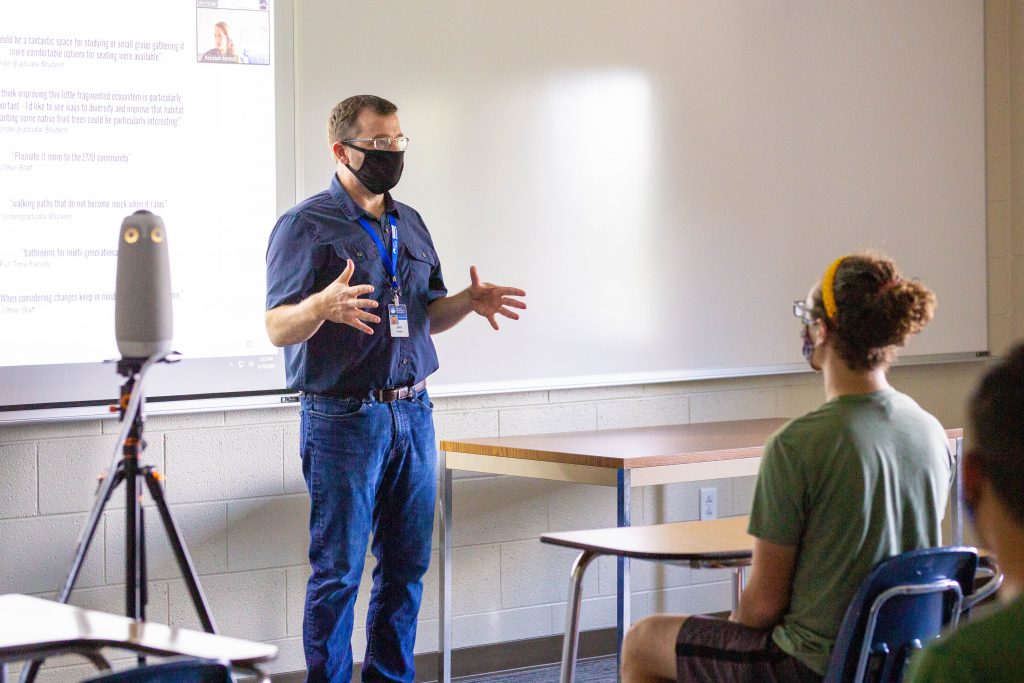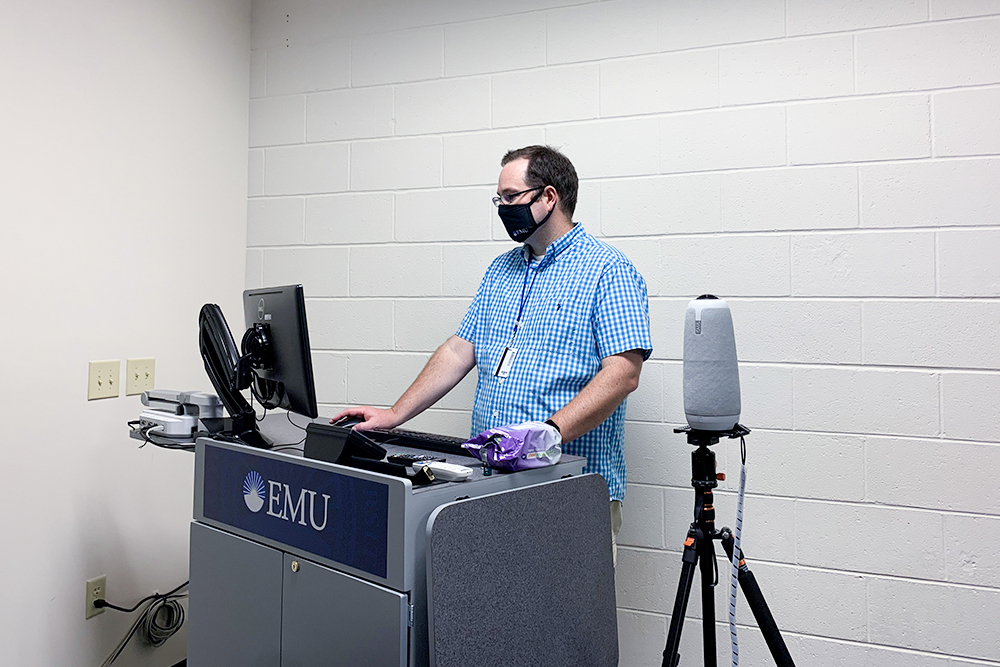Stephen Gibbs Jr. ’04, the senior education technology engineer at Eastern Mennonite University (EMU), was the featured guest on the August 18 episode of “Higher Ed AV,” a podcast which discusses classroom technology and audiovisual support in higher education.
In EMU’s Information Systems department, Gibbs works with a large team of professional staff and tech assistants, many of whom are students.
Gibbs spoke with podcast host Joe Way, director of learning environments at the University of Southern California in Los Angeles, about technological changes made over the summer to accommodate education during a pandemic.

While purchasing camera equipment and integrating online learning platforms has been part of the transition, Gibbs said that a lot of his work is customizing these technologies to each professor’s needs. That includes everything from physical classroom support to operating Zoom and Panopto to integrating those platforms with Moodle.
“What if you have 10 people on Zoom and 10 people in class? You know, all that changes the dynamic of, what do you do with those pictures coming in from Zoom, how do you post that in the classroom? How do you post slides? How do you take questions?” Gibbs explained.
Solving the puzzle of how professors, in-person students, and virtual students interact means installing and positioning the appropriate camera and display equipment – and then educating faculty on how to use it.
Each classroom presents its own challenges, with different acoustics that affect the quality of audiovisual recordings. And certain courses pose particular challenges, like one question Gibbs fielded recently – “What happens if I want to get a good visual on a dissection?” The answer turned out to be a Huddlecam Pro.
To prepare for the avalanche of questions that are sure to pour in as this semester begins, Gibbs said the Help Desk has been hiring additional student technical assistants, who can help faculty members figure out Zoom and camera settings, for instance.
This learning curve, while intimidating now, could pay off in the long run, according to Gibbs.
“The whole hybrid model is here to stay. I don’t think it’s going anywhere,” Gibbs said. “Even if COVID disappears here shortly, you’re going to have to figure out how to bring people into your classroom, and they’re going to want to do that in every classroom.”
